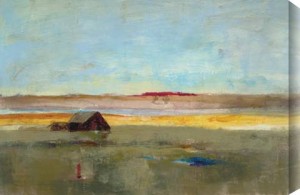What Kind of Paints Can Be Used on Canvas?
From the oil paintings of the masters to graffiti ripped from the streets and displayed in a legal venue, what can be used on a canvas defines the medium. So what exactly is okay to use on a canvas? The two heavyweights, acrylic and oil, are fairly obvious, but canvas isn’t exclusive to these two well-loved paints. With the right preparation and the right materials, a good quality canvas can take, hold and beautifully display a truly stunning array of marking materials, not just including paint.

Oil Paint- Deep Colors, Lengthy Process
Oil is a long-used medium, becoming hugely popular in the 15th century but having been used long before. In fact, oil is such a strongly prevalent type of painting that oil paintings are frequently what people refer to when they speak of art. For instance, The Mona Lisa, Guernica, and The Starry Night are all oil paintings and are among some of the most famous and well-loved works of art in existence.
A priming process, either done by the artist or the canvas manufacturer, typically precedes oil paintings on canvas. Artists find oil paints to create paintings of great detail and depth of color, as they can be mixed easily and extensively to great effect. Oil has three major drawbacks, however: it takes a very long time to dry (days, weeks, even up to a year depending on circumstances), it takes a lengthy process of creation to correctly use, and it and the materials necessary to use it are potentially toxic and flammable.
Acrylic Paint- Water-based, Cheap and Versatile
Because of these drawbacks, as well as its relative cheapness, acrylic paints have recently threatened oil’s position as king of paints. Acrylic is essentially pigment trapped in a type of thermoplastic and water. This gives it the remarkable ability to be diluted and entirely cleaned off with water alone, yet when it dries, it’s mostly waterproof and is very difficult to remove. Acrylic can also be used to create effect similar to both oil and watercolor, but can achieve a look all its own as well.
Unlike oil, one does not need to prime a canvas to use acrylic (though one certainly can), and acrylic dries rather rapidly. However, the molecules in oil paint are capable of taking more pigment in, meaning they can produce a wider variety of colors. Acrylic is a very versatile type of paint, but there are still many who prefer oil for its richness and particular look.
Other Paints- A Cascade of Options
Though oil and acrylic paint are by far the most common materials used on canvas, they are by no means the only ones possible. Of particular note is spray-paint, an aerosol-delivered paint that quickly bonds to and dries on almost any kind of surface. Spray-paint comes in a variety of colors, but can’t be mixed and must usually be applied straight to the canvas without a brush, making it a tricky medium for many artists.
In addition to the three listed above, artists have reported success with a great many other types of marking materials. Charcoal, encaustic (wax based) paint, and tempera (egg based) paint have all been used with varying degrees of effectiveness on canvas, with each requiring a specific process to make sure it works correctly. Even gouache and watercolor paints can be used on canvas if it’s primed right!

Canvas is truly a rich medium for art, and with centuries upon centuries of artists experimenting with what it can take and how, the materials that can be used upon it are almost endless. To find out what to use on canvas and how is simply a process of researching each individual material and the ways people have attempted to apply it to canvas. Do some experimenting of your own, and you’ll soon find yourself the material that pairs best with canvas for your creations. Don’t be afraid to fail; there’s always another canvas waiting. Who knows, maybe you’ll be the first to pioneer a revolutionary new technique!